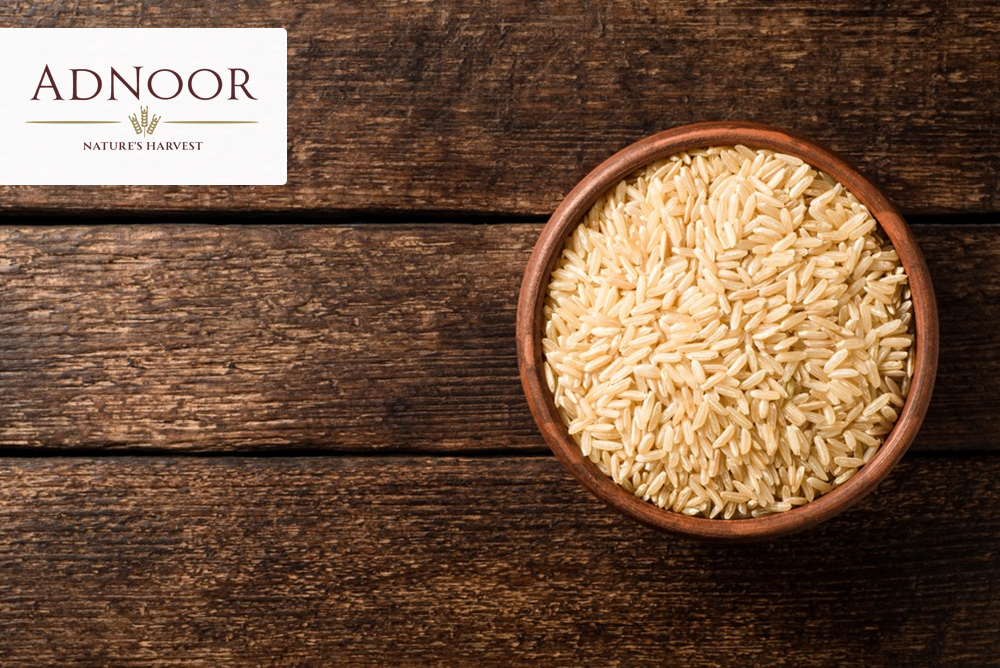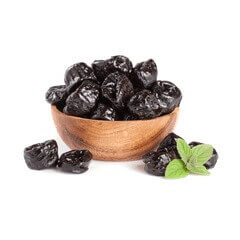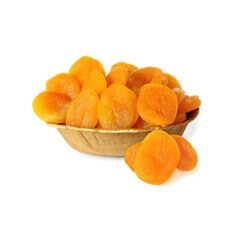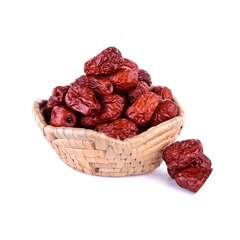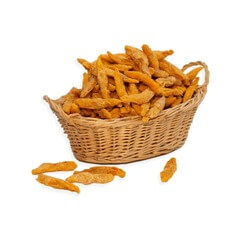Brown Rice; Its Nutritional Properties and Health Benefits
The first process the grain undergoes is husking, that is, the removal of these outer layers: the result is husked or husked rice, usually called brown rice, which is already edible. If it undergoes further processing to remove the outer seed coat, brown rice becomes white or refined rice. Lightening is another process that follows bleaching, which consists of sprinkling the grains with a layer of talc and glucose to make them whiter and shinier. Most vitamins, minerals, fibre, and fatty acids are lost during lightning.
It follows that the quality of brown rice, retaining the grain’s outer layers as much as possible, has nothing to envy with shiny rice and is, therefore, nutritionally better. There is also semi-brown rice which only undergoes part of the blanching process and retains some fibre and minerals.
Brown Rice: Calories and Nutritional Properties
The calories of rice are, on average, compared to those of other cereals. Specifically, brown rice provides 364 kcal per 100 grams, most of it in the form of carbohydrates. Proteins are well-represented, and lipids are in the form of fatty acids, most of which are unsaturated. Fibres are also well represented. Brown rice, unlike polished rice, also contains many minerals and vitamins that are lost in the polishing process. In comparison, let us see the nutritional properties of brown and polished rice in detail.
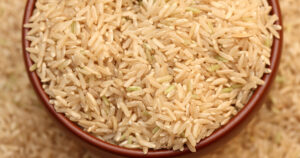
Brown Rice and Polished Rice: Nutritional Differences
We have seen that brown rice retains almost the entire outer shell of the grain, while polished rice or white rice is obtained not only after the removal of the outer layers but also by cleaning and bleaching processes. It is, therefore, natural that, due to mechanical and chemical treatments, the grain loses, along with the layers of the seed coat, part of its constituents, which are often fundamental nutrients.
One of them is fibre, which is in greater amounts of brown rice than in polished rice. The presence of a greater amount of fibre lowers the glycemic index of brown rice compared to that of white rice, which is why, for example, diabetics are advised to consume brown rice and not white rice. , which contains more available and assimilable starches.
Specifically, the glycemic index of cooked brown rice is 50, while that of boiled white rice is 73. Lipids and fat-soluble vitamins are also lost with the glazing process, along with some of the minerals found precisely in the outer layers of the rice grain. If, therefore, from a caloric point of view, there are not many differences between the two types of rice; these are much more obvious from a nutritional point of view.
On the other hand, some of the nutrients lost in polished rice can be found in certain types of rice that have undergone only part of the refining process: this is the case, for example, of semi-brown rice. In fact, after husking, brown rice can undergo a mechanical treatment which allows only part of the brain to be removed, thus obtaining semi-complete rice, which, in addition to retaining part of the fibres, also retains part of the characteristic vitamins of brown rice.
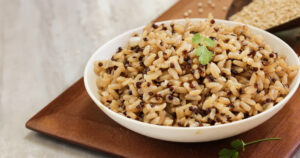
Brown Rice: The Health Benefits
As we know, rice is the most used and consumed cereal in the East. In western countries, and in particular, in those of the Mediterranean area, this is less the case because wheat is used more and, therefore, pasta. Still, among cereals, after wheat, it is certainly the most used in our regions.
Indeed, rice has many health benefits, especially its whole grain version. It is, therefore, also suitable for people with diabetes and hypertension. It is also able to prevent cardiovascular diseases and is an extremely digestible food, which explains why it lends itself well to the diet of children and the elderly.
Brown rice also contains gamma oryzanol, a molecule with strong antioxidant and anti-inflammatory properties, which is responsible for some of the properties of rice. Now let’s see in detail all the benefits of rice.
Digest
Rice is an extremely digestible cereal because the starch it contains is present in the form of small granules. It is also low in amylose, a carbohydrate found in pasta, which lengthens digestion time. It does not strain the stomach and intestines, so it is suitable for people who have digestive problems or are going through a recovery period after inflammation of the digestive tract.
Sans gluten
As a naturally gluten-free cereal, rice is suitable for celiacs. Rice flour can also be used to prepare baked goods at home without resorting to pre-packaged foods. Rice is a cereal suitable for people suffering from hyperuricemia, a condition caused by increased uric acid in the blood. In fact, the starch in rice helps eliminate uric acids.
Useful Against Diabetes
As already mentioned, brown rice, unlike polished rice, is excellent for the diet of diabetics because the fibres it contains lower the glycemic index and modulate glucose uptake by cells.
Antihypertensive Effect
Brown rice has an antihypertensive effect because it contains a molecule capable of inhibiting angiotensin II in one of its integumentary layers, a factor is known to be responsible for the development of pathologies such as hypertension and atherosclerosis.
Antioxidant
As we mentioned above, brown rice contains gamma oryzanol, a molecule with antioxidant and anti-inflammatory action, which is useful in inflammatory conditions, especially those related to the gastrointestinal system, acting, for example, as a gastroprotection.
Gamma oryzanol gives brown rice its cholesterol-lowering effect by inhibiting the expression of proteins linked to fat accumulation and the inflammation typical of the metabolic syndrome.

Satiety
Brown rice promotes weight loss because it contains a lot of fibre and has a considerable satiating effect, which is why it is widely used in hypocaloric diets where, although in small quantities, it gives a feeling of satiety.
Visit the ADNOOR website to get the best long-grain rice, golden Sella basmati rice, brown rice, white rice, Brown Super Kernel Basmati Rice, nuts, seeds, and dried fruits. We take pride in saying that we are the Best Basmati rice brand in Canada and have been the importers, exporters, wholesalers, distributors, and co-packers of various nuts and grains in Canada for the last 25 years. So, without wasting time, visit our website and order what you need.

